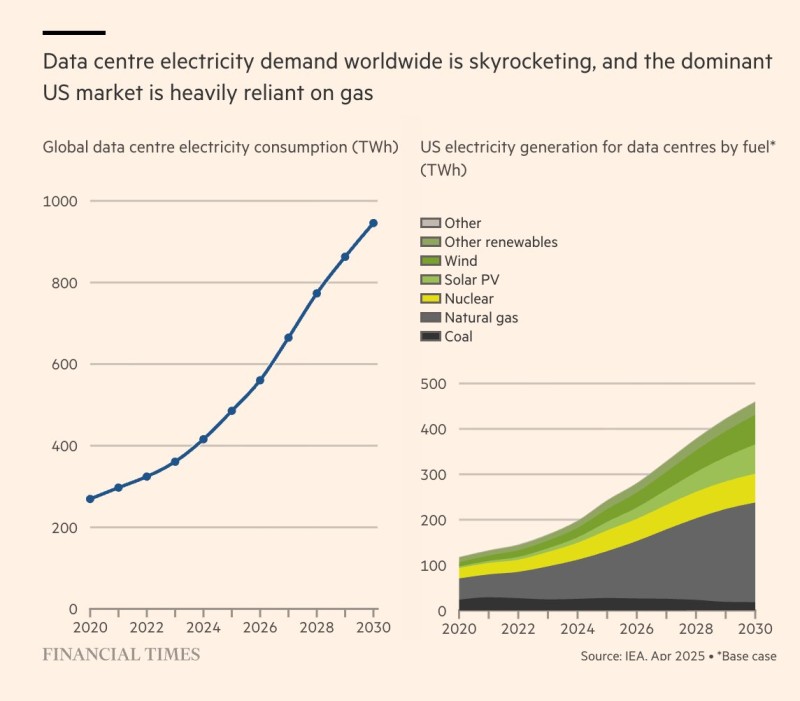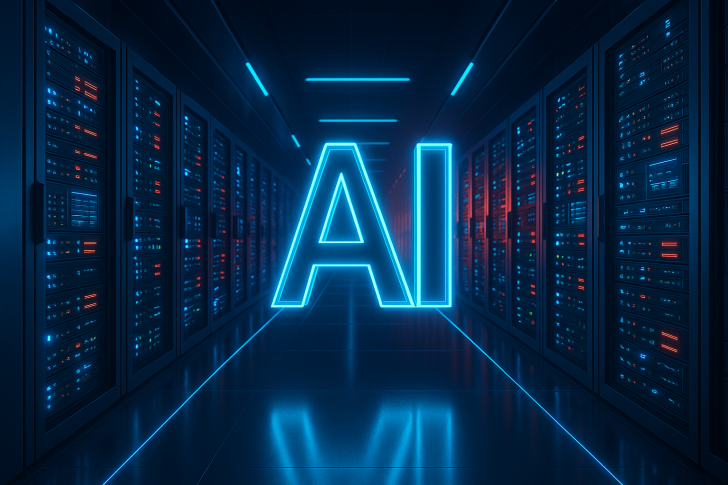The world's digital infrastructure is entering an energy-intensive phase. International Energy Agency data shows global data center electricity consumption is on track to double by 2030. As AI and cloud computing accelerate, power demand from these facilities is becoming one of the fastest-growing sources of global energy use. The U.S., which dominates the data center market, remains heavily reliant on natural gas, highlighting a growing tension between technological expansion and energy sustainability.
Global Data Center Energy Use Rising Exponentially
Economist Adam Tooze recently highlighted IEA projections showing data center electricity consumption climbing at a near-exponential rate.

Consumption is expected to surge from around 250 terawatt-hours in 2020 to almost 1,000 TWh by 2030, a fourfold increase.
The drivers are clear:
- The rise of generative AI models like GPT-5 and Gemini, which demand massive computing power
- Expansion of cloud services and hyperscale facilities by Amazon, Microsoft, and Google
- Continuous AI inference workloads that keep servers running around the clock
By decade's end, data centers could consume as much electricity as Japan or Germany.
The U.S. Energy Mix: Still Dominated by Natural Gas
Despite renewable energy progress, natural gas remains the primary power source for America's data centers. U.S. data center demand could exceed 500 TWh annually by 2030, with fossil fuels accounting for more than half. This carries serious implications: grid strain in hubs like Virginia, Texas, and Arizona; expanding carbon footprints that undermine corporate climate pledges; and mounting regulatory pressure as governments consider new emissions rules for AI infrastructure.
AI's Growing Energy Footprint
The AI revolution is transforming global power dynamics. Training large models can consume millions of kilowatt-hours, while continuous inference operations add massive ongoing energy demand. This creates an "AI-energy paradox": while AI promises optimization across industries, the systems powering it are increasingly energy-hungry. Tech companies are investing in renewable power and exploring small modular nuclear reactors, but these efforts lag behind AI expansion, meaning emissions may rise before they fall.
The Bigger Picture: AI and Energy Policy Converge
Energy is becoming the new bottleneck of the digital economy. The next wave of AI progress depends on affordable, clean electricity. Europe is pushing efficiency standards, U.S. regulators are considering grid upgrades, and Asian nations are experimenting with power usage caps. Without coordinated action, the race for AI supremacy risks deepening energy inequality, as nations with cleaner, cheaper power gain a decisive advantage.
 Alex Dudov
Alex Dudov

 Alex Dudov
Alex Dudov


